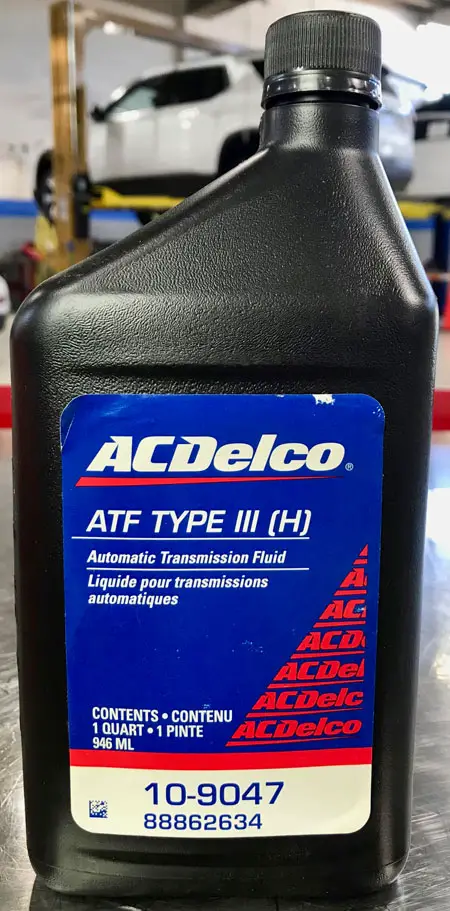Dexron 3 VS Dexron 6 | Know The Differences
When you own a vehicle, you will always want to have it in tip-top condition. And, it’s not always about cleaning and upgrading the components for enhanced performance.
A mistake as simple as pouring the wrong transmission fluid into the dipstick can wreak havoc on your car. Instead of enjoying a peaceful ride to your destination, all you will be doing is wish wholeheartedly that the transmission would go back to its original state.

But, unfortunately, you would either have to rebuild or replace the transmission, which means you’ll have to dip into your savings.
There’s a way to avoid such unwanted circumstances by knowing what your vehicle really needs. If you’ve heard about the two well-known fluids, Dexron 3 and Dexron 6, know that they have different properties, and so you will need to choose the one that is compatible with your vehicle.
This guide on Dexron 3 VS Dexron 6 is here to give you the insight to eliminate all the confusion.
Notable Features Of Dexron 3
Improved Friction Stability
In comparison to the previous versions of Dexron, Dexron 3 offers improved frictional stability. According to research for differentiating friction characteristics of the two fluids, Dexron-III showed positive results.
When the two fluids are tested using a friction machine, dynamic friction remained stable with Dexron-III, while Dexron-II resulted in a decrease in dynamic friction.
More High-Temperature Oxidation Stability
When a vehicle undergoes heavy usage, it is an indication that the transmission is working harder. As a result, the automatic transmission fluid heats up. It has to withstand the increased temperature, or otherwise, oxidation will cause the fluid’s qualities to deteriorate.
Dexron-III is more capable of withstanding oxidation caused by high temperatures in comparison to its ancestors.
Better Material Compatibility
The automatic transmission fluid should be compatible with the material of the dipstick tube inside which it flows. Dexron-III is made to offer better compatibility with the inner wall of the tube.
Low-Temperature Fluidity
Despite lower temperatures, Dexron-III will flow easily and hence, won’t lose its effectiveness.
<<Check Our Recommended Dexron 3 Transmission Fluids Here>>
Notable Features Of Dexron 6
Improved Oxidation Stability
When Dexron-III and Dexron-VI are tested for oxidation stability, results showed that Dexron 6 is better at resisting oxidation.
Improved Shear Stability
A change in viscosity as a result of shear stress can cause the transmission fluid to lose its frictional properties. Dexron-VI is made to provide better shear stability for smooth driving.
Anti-Wear Protection
Along with lubrication, Dexron-VI creates a thin film on the metal parts to prevent them from wearing and rusting.
Foam Resistance
Usually, an automatic transmission fluid gets foamy when air is introduced to it. The air expands in the low-pressure side of the hydraulic pump and contracts on the high-pressure side. When the fluid passes through the high-pressure side, air bubbles are created along with noise, which prevents the pump from supplying the fluid properly to all the critical parts of the transmission.
With the anti-foaming properties of Dexron-VI, this issue can be eliminated.
Low-Temperature Fluidity
Since Dexron-VI is formulated to maintain fluidity even at low temperatures, the components will always remain protected.
<<Check Our Recommended Dexron 6 Transmission Fluids Here>>
Quick Summary On Dexron 3 Vs Dexron 6?
The main difference between Dexron 3 and 6 is that, the Dexron 3 is a regular ATF and the Dexron 6 is the upgraded and synthetic automatic transmission fluid. You can’t use Dexron 3 in a transmission that is designed and recommended for the Dexron 6.
| Dexron III | Dexron VI |
| Conventional fluid | Synthetic fluid |
| Less stable at higher temperatures | More stable at higher temperatures |
| Has a shorter shelf life | Has a longer shelf life |
| Has higher viscosity | Has lower viscosity |
| Not compatible with vehicles requiring Dexron-VI | Compatible with older and newer vehicles requiring Dexron in general |
| Check Price On Amazon | Check Price On Amazon |
Frequently Asked Questions
Can You Mix Dexron 3 With Dexron 6?
Yes, It is possible to mix Dexron-III with Dexron-VI. In order to get the utmost advantage, all you need to do is fully drain the transmission before refilling it with the two transmission fluids. You will also need to clean the magnet so that it can effectively collect any ferrous particles.
Can You Use Dexron 3 Instead Of 6?
Dexron-VI is compatible with older vehicles whose automatic transmission uses the earlier versions of Dexron. It is also compatible with newer vehicles. However, you can’t use Dexron-III in automatic transmissions designed specifically for Dexron-VI.
Conclusion
Dexron-III is a conventional fluid type, while Dexron-VI is synthetic. The latter is an updated version that holds more advantages due to its synthetic properties. It provides better oxidation resistance, allows smoother shifting of gears, and even extends the transmission’s life! Not only that, but also Dexron-VI is compatible with newer cars and older models that require Dexron.
By reading the Dexron 3 VS Dexron 6 guide, hopefully, you’ve gained insight into the two types of automatic transmission fluid. Now you will need to know which fluid type your vehicle’s manufacturer requires in order to avoid unwanted issues.




